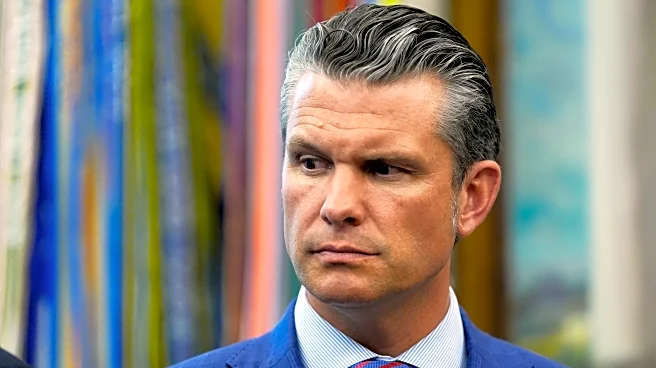After Stephen Kolek’s 4th straight good game after coming over from the Padres, there was talk of him being in the rotation next year. First up, Anne Rogers:
“Hopefully, it’s a good kind of runway into next year,” Kolek said. “This year’s still going. I’ll at least get another [start], and we’re going to fight to the end. For now, it’s focusing on today, and tomorrow, we’ll worry about tomorrow. As the future goes on, we’ll worry about that whenever it comes.”
“I think I can’t
reiterate enough how excited we were to get both he and Bergert,” Royals manager Matt Quatraro said. We all know how much Freddy (Fermin) meant to us as a team and to this organization. But to get two quality starting pitchers that are young and have a lot of control left is really exciting for us.”
Thompson also profiled Carlos Estévez:
Estévez is just the fifth Royals pitcher to reach the 40-save plateau. The right-hander joins an exclusive list that includes Greg Holland (twice), Jeff Montgomery, Dan Quisenberry (twice) and Joakim Soria (twice).
“I knew there were some great names up there,” Estévez said. “But man, only five guys, that’s really cool to be on that list.”
Royals assistant GM Scott Sharp could potentially be in the mix for the Nationals GM:
The Nationals are continuing to their attempts to get a front office in place before the offseason. Per a report from Ken Rosenthal and Brittany Ghiroli of The Athletic, the Nats recently interviewed Eddie Romero, assistant general manager of the Red Sox. In a tweet, Ghiroli also mentions Royals assistant general manager Scott Sharp, though it’s unclear if Sharp has interviewed for the job.
Listicle? At CBS Sport, R.J. Anderson wrote about “MLB rookies not living up to the hype”. Hm… who was #1?
- Jac Caglianone, OF, Kansas City Royals
Why you know his name: Caglianone had a prolific career as a two-way player at the University of Florida, shattering Matt LaPorta’s career program record for home runs by swatting 75 in 165 games. The Royals selected him sixth overall in the 2024 Draft based on his middle-of-the-order upside. (I’ve often compared his ceiling to a poor man’s Yordan Alvarez or a more famous Anthony Santander.) They’ve since had him ditch pitching in favor of playing the outfield.
How he’s performed to date: Caglianone debuted in early June as the Royals sought improvement over what they had received from their middling collection of right fielders. Unfortunately, he hasn’t cleared the bar. Through his first 53 games, he’s hit .152/.228/.277 with just six home runs and nearly three times as many strikeouts as walks. Caglianone’s 40 OPS+ falls between the figures posted by Hunter Renfroe (36) and Mark Canha (52). Renfroe and Canha, for those wondering, were two pieces of Kansas City’s aforementioned right-field situation pre-Caglianone. Both were released by the Royals because of their failures to perform at the plate.
Blogs?
Kevin O’Brien, the Royals Reporter, posted “Three Encouraging Royals Takeaways From the Mariners Series”:
Safe to say, Ragans’ performance was encouraging, especially in the first inning. He absolutely dominated All-Stars Randy Arozarena, Cal Raleigh, and Julio Rodriguez, inducing all of them to strikeout on only 11 pitches (with most of them fastballs).
Pitcher List’s Nick Pollack recapped Ragans’ first inning on Twitter. Safe to say, his reactions during Ragans’ inning pretty much matched my enthusiasm at the stadium while watching him in person on Wednesday evening.
Both Craig Brown (Into the Fountains) and David Lesky (Inside the Crown, $) had posts about Wednesday’s game.
Blog Roundup:
- Darin Watson at U.L.’s Toothpick: This Date In Royals History–1985 Edition: September 18 – The Royals’ offensive woes against Seattle continue, as their scoreless streak reaches 26 innings and counting
- Royals Data Dugout ($): 3 Negative Takeaways from 2025
- Oliver Vandervoort at KOK: The Athletic snubs Royals’ rising star of well-deserved AL ROY finalist recognition (Cameron, of course)
- Caleb Moody at KOK: Scuffling Royals rookie finds his way back to majors amid flurry of injuries (John Rave)
For OT today, we’re going to finish off our three week trek through Isaac Asimov’s Foundation trilogy. If you missed the first two parts, they are here (Novel One: Foundation) and here (Novel Two: Foundation and Empire). Today, it’s time for the novel three: Second Foundation. Check out that first link if you want to read the intro and disclaimers. Also, remember two weeks ago when I wrote:
That means the initial plan is to do one book a week for the next three weeks. Fortunately, the Royals are still in playoff contention, so they should provide more than enough to talk about if you don’t care to talk about the books.
How awkward… Anyhoo, onto part three!
* * * * *
Novel 3: Second Foundation
Book 1: Search by the Mule
Characters: The Mule, General Han Pritcher, unconverted Bail Channis, and First Speaker of the Second Foundation
Date: 305 FE
Seldon Crisis: None
Plot/Notes: The Mule desires to find and destroy the Second Foundation, the only remaining threat to him. To find it, he sends loyal Han Pritcher and unconverted man Bail Channis. The latter is sent because The Mule has noticed his best generals have been “tampered with” and he wants someone unconverted and ambitious to go along. Channis thinks he’s found it on Tazenda, but Pritcher thinks he’s a spy. The Mule arrives and reveals Channis is, indeed, a Second Foundationer, who releases Pritcher from his control by The Mule. After a mental battle, Channis is defeated by The Mule and reveals Rossem as the location of the Second Foundation. But then the First Speaker appears. He informs The Mule that Channis had false information planted and the Second Foundation fleet is on its way to Kalgan to undo The Mule’s control. The First Speaker defeats The Mule, alters his mind, and sends him back to Kalgan as a benevolent ruler.
The book starts 5 years after Foundation and Empire with The Mule in the driver’s seat, consolidating his power: “Politically, the Union is quiet. Economically, it is prosperous. Few would care to exchange the peace of the Mule’s steady grip for the chaos that had preceded, On the worlds that five years previously had known the Foundation, there might be a nostalgic regret, but no more. The Foundation’s leaders were dead, where useless; and Converted, where useful.” The Mule has always been a little mad, but he’s obsessed with ruling the galaxy “Revenge on all; on a humanity of which he wasn’t a part; on a Galaxy in which he didn’t fit”. The Second Foundation is the only thing that stands in his way. But he’s not wholly driven by revenge: “I intend to unite the Galaxy now – and reach Seldon’s thousand-year goal in three hundred”.
The first chapter, Two Men and the Mule, has The Mule sending Han Pritcher and a new character, Bail Channis, to search for The Second Foundation. Channis gets a modern nature and nurture description: “his emotional make-up had been unadjusted by the Mule; it remained exactly as it had been formed by the original shape of its heredity and the subsequent modifications of his environment”.
There’s a lot of exposition in the first chapter, setting up the rest of the book. The Mule tells the loyal Pritcher that he gets Channis because Han “lost your native motivations, you lost something, some subtle drive, that I cannot possibly replace”. Meanwhile, he tells Channis that he is being sent out there because of his initiative as the Second Foundation has been subtly tampering with his men: “loyalty is left intact, but initiative and ingenuity are rubbed out”. He teams them up while pitting them against each other. So the loyal and capable Pritcher believes there is no Second Foundation and Channis ambitiously wants to find it.
Asimov removes all doubt about its existence with “Interludes” at the end of each of the first four chapters, scenes from “The Executive Council of the Second Foundation”. They are described as “scientists with a psychological orientation… whose fundamental conception of scientific philosophy is pointed in an entirely different direction from all of the orientations we know” for whom “speech as known to us was unnecessary”. It’s even pointed out that the translations in the interludes lose some of the meaning so that us primitive humans can follow along. They talk about how they were lucky a single human (Bayta) and The Mule’s affection for her blinded him and allowed them to get the upper hand. However, Seldon’s entire plan hangs by a thread so they take a huge risk: “We must allow the Mule to find us – in a sense.”
The book then slows down and doesn’t feel as “easy” as the rest of the trilogy. I think we’ve really reached the point where Asimov just wanted to be free of this universe. We get a lot treknobabble, uncharacteristic of Asimov. However, we also get more characterization, like when Channis is asking about some scifi widget called a hypertracer: “That’s not enough. I’m not a Foundation man. What is it?” The scene gives us exposition mixed with Channis characterization with a splash of nostalgia for the older books. Asimov does this so well even in the slow scenes.
Channis thinks he’s discovered the Second Foundation between some bad wordplay and a new gadget called the Galactic Lens. But it feels forced to Han Pritcher and contrived to the reader. There’s a plot with the hypertracer that leads the reader and characters to think something is up, but even the explanation doesn’t really wash later on.
Then we fiddle around on the poor backwater planets of Tazenda and Rossum for a while: “the men of Tazenda came and with dismay watched their hard struggle for existence become harder… and the peasant had learned how to hide his grain and drive his cattle into the forest, and refrain from having his hut appear too ostentatiously prosperous”. There’s talk of “peasant virtues” and perhaps a complaint of the modern (50s) times that still echo today: “I am convinced there is no suffering among the population and that their uncomplicated lives manage to contain a well-balanced happiness lacking in the sophisticated populations of the advanced centers” and “All these have brought mechanical efficiency to their subjects at the cost of more intangible values. Tazenda brings happiness and sufficiency.”
There’s some tete a tete between Pritcher and Channis and then internal Pritcher monologue exploring the nature of the emotional control: “he ‘felt’ his emotions; certainly he seemed no different to himself, but would he feel any difference” and his confidence in his skills ebbed and flowed: “the age that he had felt creeping over him of late had not yet deprived him of his own capacity for making smooth the blunders of others”
The conflict appears to come to a head with a Princess Bride-style showdown where Pritcher arrests Channis for treason: “Perhaps because I can be trusted. Or aren’t you in the market for logical reasons?” “Or perhaps because you can’t be trusted. Which is logical enough, as it turns out.” “Are we matching paradoxes, or is this all a word game to see who can say the least in the most words?” (“Truly, you have a dizzying intellect.”) When Channis again has Pritcher doubting his own sanity, The Mule arrives and does a classic Poirot-esque unwinding of the story: Channis is indeed a Second Foundation man and The Mule knew it.
This leads to a mental battle, the likes of which I’m not sure had been put down in print before: “What followed thereafter is difficult to describe by one with the normal complement of senses and the normal incapacity for emotional control. Essentially, this is what Channis realized in the tiny space of time involved in the pushing of the Mule’s thumb upon the trigger contact.” Channis released Pritcher from his control so both were against The Mule. Channis thought he had won when The Mule knocked Pritcher unconscious.
The Mule and Channis banter on for a little longer: “The days of the dying Empire… was a time of absolutes, of the great final generalities, at least in thought. It was a sign of decaying culture, of course, that dams had been built against the further development of ideas.” Channis thought he had been stalling for time while The Mule was probing his mind. He had already sent his fleet to destroy Tazenda. And then he mentally tortures out of Channis that the Second Foundation is actually on Rossum: “It is because your Second Foundation miscalculated me to the very dregs of the end”.
But then the First Speaker of the Second Foundation arrives (and it’s not entirely clear where this took place). He heals Channis and explains that emotional control “is implicit in the human brain” but “the faculty of direct emotional contact tended to atrophy with the development of speech a million years back”. They foresaw The Mule, “seeing man in the kingdom of the blind”, but they underestimated him: “we allowed only for a megalomania – not for an intensely psychopathic paranoia as well”.
The Mule lashes out: “Let the Galaxy Protect itself as best it can, since it stirred not a whit for my protection when I needed it.” Then he explains to The Mule that Channis volunteered to have his mind wiped and false information planted. The Second Foundation men are already on their way to unprotected Kalgan to cause a revolt. And when The Mule despairs about this, the First Speaker adjusts his mind to make him a benevolent ruler and forget all about the Second Foundation.
* * * * *
Book 2: Search by the Foundation
Characters: Toran Darrell II and his daughter Arkady Darrell, “uncle” Homir Munn, young scientist (2F) Pelleas Anthor, Lord Stettin and Lady Callia (2F) of Kalgan, and Trantor farmer and First Speaker Preem Palver (2F)
Date: 376 FE
Seldon Crisis: None
Plot/Notes: A resistance in the First Foundation believes there is a Second Foundation, they defeated The Mule, and have tainted many people in the First Foundation, led by neuroscientist Toran Darrell II, son of Bayta. New conspirator, Palleas Anthor, tries to sneak in the window but ends up in the window of Arcadia Darrell, Toran’s daughter. She listens in on them and stows away with librarian Homir Munn, who goes to visit Kalgan and research The Mule.
This is the most complete book in the entire trilogy and also the most different from all the others. Once again, the book starts out with a history of the Foundation. This time, it’s written through the eyes of the granddaughter of a previous main character with a good female teenage voice. And by good voice, she’s the star of the book: it treats her as an adult with complex thoughts and feelings, but while adjusting for age and not being condescending. Anthor jokes “I should think you’d know everything before he tells you” and she confidently retorts “I usually do” before lecturing him: “Because you advertise what you’re trying to hide, silly. If I have a secret, I don’t put tape over my mouth and let everyone know I have a secret. I talk just as much as usual, only about something else.” Asimov establishes her extreme competency early on.
After the character introduction, we’re taken to the Second Foundation where the First Speaker is talking to an apprentice for Speakerhood. Using the Prime Radiant, the teacher shows the student the equations that make up the Seldon Plan (“neither complete nor correct”) and how it has been thrown off course. He then challenges the student to add his own piece to the plan and help get it back on track as it is still in danger of failing. All the while he is dishing out Asmiov-style epigrams like turning the Socratic “I know that I know nothing” on its ear: “the most hopelessly stupid man is he who is not aware that he is wise”. It mirrors an academic environment as the First Speaker is proud of his little specialized section, which was peer reviewed before being added, similar to modern academia.
The idea of the mental adjustment comes full circle and is given a purpose: “All the suffering that humanity ever knew can be traced to the one fact that no man in the history of the Galaxy… could really understand one another. Every human being lived behind an impenetrable wall of choking mist within which no other but he existed… Because they did not know one another, and could not understand one another, and dared not trust one another, and felt from infancy the terrors and insecurity of that ultimate isolation.”
As was psychohistory:
“Psychohistory had been the development of mental science, the final mathematicization thereof, rather, which had finally succeeded. Through the development of the mathematics necessary to understand the facts of neural physiology and the electrochemistry of the nervous system, which themselves had to be, had to be, traced down to nuclear forces, it first became possible to truly develop psychology. And through the generalization of psychological knowledge from the individual to the group, sociology was also mathematicised.”
We reach the final theory of Asimov’s work from the last book and a half: “a ruling class of psychologists” and how society “would fear its development and fight against it”. It’s a different type of dystopia. As one review summed it up: “in the Second Empire it will be done with Science and For Your Own Good”. This was the full plan and these are the heroes we had been rooting for all along. The Salvor Hardins and Hober Mallows were just rough children in this grand plan.
Asimov paints Arkady as smart, if not smarter, than the adults. And these are not the incompetents of a Roald Daal where the children look good by comparison – the adults are also capable. Many of the adults mention something about her being very intelligent, sometimes even moreso than other characters, even at her age. And her actions are mostly smart and clever. I wonder if that idea was out of the norm at the time or if there was a higher opinion of teenagers then. And a woman? In the early 50s?
Arkady helps Asimov break out of the Seldon formula: “for the first time in the history of the Plan, it is possible for the unexpected actions of a single individual to destroy it”. In short, the stakes of the entire Seldon plan rest on Arkady. While this plays like more pop scifi than anything written so far in the trilogy, it’s arguably the most complicated and complex idea, as well.
For instance, when it is discovered that she spies on them and stows away with the timid, stuttering “uncle” Homir Munn, housekeeper Poli: “tried vainly to put emotion into words but ended by thrusting a sheet of paper and a cubical object at him”. It’s not just a good turn of a phrase for description but revisits the idea of emotion and words from before. And, while the characters are still not overly complicated, save for Arkady, there are bits like this sprinkled in: “the house was somehow very lonely at night and Dr. Darell found that the fate of the Galaxy made remarkably little difference while his daughter’s mad little life was in danger.”
The conspirators decide not to recall her, thinking it would appear even more suspicious. Then we pan to Arkady capably handling Homir Munn and the stowaway situation. The scene shifts to Lord “Poochie” Stettin and Lady Callia of Kalgan. The planet, changed by The Mule, was still home to the “most stable industry”: amusement. Arkady and Callia swapped gossip about Callia’s interest in the Foundation, Arkady’s visit, and Munn’s research on The Mule. Asimov peels back some layers about the varied worlds of the Foundation, no longer the monolith from earlier in the series, through Arkady’s eyes: “the Foundation was a suburban town, a comfortable house, the annoying necessities of education, the uninteresting eternities of a quiet life”. Arkady then plants the idea with Callia that Kalgan may be the center of the new Empire and that’s Munn’s true mission.
Asimov ends the chapter, playing with the reader through Arkady, the lightly unreliable narrator, using words that can be used another way, in retrospect: “But Arcadia was delighted. She knew what had happened. Or, at any rate, she thought she did.” It’s odd- you know there are twists coming. But this isn’t the modern practice of littering the stage with a thousand Chekhov Guns so that the reader has no idea which handful will go off. Asimov rarely clutters up the prose or plot- it’s very straightforward. It all makes satisfying sense looking back and doesn’t feel like he’s hiding anything. He’s so adept at using the tools on stage, even taunting the reader a little with the mention of “an endless cycle of double-double-double-double-crosses” (later in the book). We know to expect an M. Night Shyamalan-style twist, but it’s not the one we expected. You don’t feel cheated – it’s still satisfying even as it is unexpected. But we’ll get back to that in a bit.
Back on Terminus, Poli laments “that’s the trouble with people; they just don’t remember”, talking about food rationing and taxes, and reminding us that some things don’t change. And she delivers a strong anti-war: “You’d think if they had sense, people would just never want to start it again; just have nothing to do with it”.
Meanwhile, Toran reflects on his life: “But she had died. Less than five years, all told, it had been; and after that he knew that he could live only by fighting that vague and fearful enemy that deprived him of the dignity of manhood by controlling his destiny; that made life a miserable struggle against a foreordained end; that made all the universe a hateful and deadly chess game.” Personally, I’ve always wondered about what would happen with different life choices. What if I wasn’t married or had a family – how would that impact what drives me?
On Kalgan, Stettin grows tired of Munn’s library research which gives no new information about the new empire. In their argument, Munn threatens “I’ll have you re … remember, my l … lord, that I am a citizen of the Foundation” and Stettin throws it back at him, while calling back to The Mule: “A threat to frighten children. A horror with which to beat back an idiot.” Too late, they realize Stettin plans to take Arkady as his bride, a member of a prominent family of the Federation. Callia appears to help Arkady escape but, the Lady’s eyes betray her and Arcadia realizes “she was running from a single, frail woman who had helped her escape… an entity she knew, certainly and finally, to be a woman of the Second Foundation”.
During the escape, she frantically starts wondering who or what to trust. It reminds me of and could have inspired a significant set of Star Trek: Deep Space Nine episodes (Homefront, Paradise Lost) with a brilliant scene about how only 3 aliens caused mass hysteria on Earth. She goes to a spaceport and is overcome with panic: “Consider then the complete psychic isolation of a single unit of this terribly intent mob that does not know where to go; yet at the same time feels more intensely than any of the others possibly can, the necessity of going somewheres; anywhere!” Once Lady Callia is revealed, we, as readers, switch from wondering if the Second Foundation even exists (maybe these interludes and chapters are happening on another plane or at another time in history) to seeing them everywhere, just as Arcadia did.
The panic lasts one chapter, aptly called Anxiety, before the reader, like Arkady, is calmed by Mamma and Pappa (Preem Palver). They use their folksy empathy to understand why she was running from Stettin and their underestimated “flyover” slyness to bribe a guard and escape a locked-down airport. They escape Kalgan just as Stettin starts a war with the Foundation. Arkady stays safely on Trantor until the conclusion of the book. There, one of my favorite epigrams (or maybe just a proverb) of the series is delivered: “No one should talk before breakfast. You’re not in a healthy condition with no food in the stomach.”
In one of the war chapters, there’s a scene that would look great in modern cinema. The Mayor and Dr. Darrell are looking at a 3-dimensional battle map of the galaxy. The Mayor chiding the opposition for their lack of strategy. But then the scene shifts to “the Lord of Kalgan stood before a twin of the Galactic model which the mayor and Darell had inspected. Except that where the mayor frowned, Stettin smiled.” How far have we come that the mayor isn’t even given a name because of his insignificance, even as leader of one of the most powerful forces in the galaxy.
The war lasst 4 chapters: Beginning of War, War, Ghost of a World (interlude), and End of War. The plucky Foundation rose up yet again, as explained by Stettin’s first minister Lev Meirus:
“I have told you often, sir, that you are not the Mule. You may control ships and guns but you cannot control the minds of your subjects. Are you aware, sir, of who it is you are fighting? You fight the Foundation, which is never defeated – the Foundation, which is protected by the Seldon Plan – the Foundation, which is destined to form a new Empire. The men and women of Kalgan and its subject worlds believe utterly and deeply in the Seldon Plan as do all the inhabitants of this end of the Galaxy. Nearly four hundred years of history teach the fact that the Foundation cannot be beaten…You are not [The Mule]. What is worse, the people know that you are not. So your ships go into battle fearing defeat in some unknown way. The insubstantial fabric of the Plan hangs over them so that they are cautious and look before they attack and wonder a little too much. While on the other side, that same insubstantial fabric fills the enemy with confidence, removes fear, maintains morale in the face of early defeats. Why not? The Foundation has always been defeated at first and has always won in the end.”
Meirus is yet another piece of Asimov’s wonderful writing puzzle, placed at the beginning of the story and end of the story to give exposition. But he doesn’t feel forced either time: he serves a purpose each time and feels realistic both in character and in mood. This is the genius of Asimov’s writing: he doesn’t load the story down with too many extra pieces and each gets a lot of use without feeling contrived. In the third person limited perspective, readers are only shown the pieces that are important.
The ending comes off a little hokey as it’s basically what Wayne’s World did with a Scooby Doo ending, a “true” ending, and then the real ending. As with the war, there were 3 chapters: “I know”, “The Answer that Satisfied”, and “The Answer that was True”.
The first comes back around to a technique introduced back in the initial meeting that Arkady is spying on (encephalographic record). That’s just how Asimov does this: multi-purposed sections. While you’re trying to keep up with Arcadia early on, he’s introducing a technique that will come back as a major plot point later. But it all feels pre-mapped and well-planned.
Homir returns to the conspirators with the conclusion that there is no Second Foundation. Anthor accuses him of being tampered with by the Second Foundation. They take the readings and Homir has been tampered with. After a scuffle, he’s knocked out, and Anthor claims to know where the Second Foundation is (“successive shocks have a decreasing effect”). He claims it’s on Kalgan, after all, that’s where everyone who was handled was. Darell says that’s not quite it as he invented a wartime device that shielded one from mind control and he knows where the Second Foundation really is.
He proposes it’s on Terminus due to an encoded message from Arkady “a circle has no end” and that they’ve been tampered with all along. Everyone is skeptical, but he has a second weapon that only works on those with the extra sense (“is there any weapon of attack that will be effective against a normal, sighted man which is useless against a blind man” “A light in the eyes”). And he uses it on Anthor, knowing he’s of the Second Foundation. Anthor admitted he’s been going by the plan all along, but that he couldn’t improvise or risk ruining the entire plan. Toran said he’s been skeptical since Anthor came to him from Kleise (who was the subject of a passage earlier in the book where Toran is given character by anguishing about his past). Toran gets worried and asks Arcadia how she knows. She said it just came to her – that worries him greatly, as it sounds like something a tampered person would say. However, he scans her and her brain waves are normal, to the relief of both.
Finally, in “The Answer That Was True”, we return to the First Speaker and Student for exposition. First, fifty martyrs from the Second Foundation were sacrificed for the greater good:
“Essentially, it was necessary for the men of the First Foundation to be thoroughly convinced that they had located and destroyed the Second Foundation. In that way, there would be reversion to the intended original… They hated and envied our supposed superiority; yet they relied on us implicitly for protection. If we had been ‘destroyed’ before the Kalganian war, it would have meant panic throughout the Foundation. They would then never have had the courage to stand up against Stettin, when he then attacked; and he would have. Only in the full flush of victory could the ‘destruction’ have taken place with minimum ill-effects.”
You can hear Asimov’s satisfaction about how he could finally write about individuals again in this story and how many intricacies “were forced into our plan of the last decade and a half simply because we dealt with individuals”.
There’s some commentary on the Mind Static device and how science progresses:
“They have no one to use it against. It has become a sterile device; just as without the spur of our own menace against them, encephalographic analysis will become a sterile science. Other varieties of knowledge will once again bring more important and immediate returns. So this first generation of mental scientists among the First Foundation will also be the last – and, in a century, Mind Static will be a nearly forgotten item of the past.”
For the final twists: the First Speaker reveals that Arkady was tampered with from birth on Trantor, so that’s why her brain waves didn’t show any issues. Finally, on the last page, it is revealed that Preem Palver was the First Speaker and Trantor was, indeed, the Second Foundation (and “All Roads lead to Trantor”, looping us back around to the Fall of the Roman Empire). And so the Foundation was back on track for the Seldon Plan. From another review: “As with many of Asimov’s other stories, he ties up all of the mysteries in a neat little bow toward the end.” And he even gives a nod to it on that final page: “The First Speaker had long since stopped speaking to the Student. It was an exposition to himself, really” and, of course, the reader.
The story is not without its flaws. Overall, Stettin is a much weaker adversary than The Mule. Heck, it’s even admitted in the story. But the real boogeyman of the Second Foundation has a real sense of danger to it. The enemies continue to escalate appropriately. Yes, a lot of the characters are still wooden. But the overall story is the best in the entire series. Arkady’s probably the best character in the series. Many facets of the story are honed in a way that felt like Asimov’s previous works were working towards this. The major final plot twist of Trantor was a perfect example of hiding things in plain sight, as Arkady told us about at the beginning of the story.
Here’s a soundtrack we haven’t revisited in more than 3 years. It’s one of my favorite soundtracks, but I’ve also used so many of the good tracks off of it in the past.
As I’ve done the last year or so, let’s link to all of the times I’ve revisited the game:
- 2016.11.12 TWEWY – Calling
- 2017.12.22 TWEWY – Hybrid
- 2018.10.12 TWEWY – Long Dream
- 2019.07.12 TWEWY – Someday
- 2020.02.28 TWEWY – Twister
- 2021.05.21 Neo The World Ends With You (Neo TWEWY)
- 2021.12.03 TWEWY – Give Me All Your Love
Today’s song is one of the hidden tracks off of the soundtrack, “Emptiness and”:













